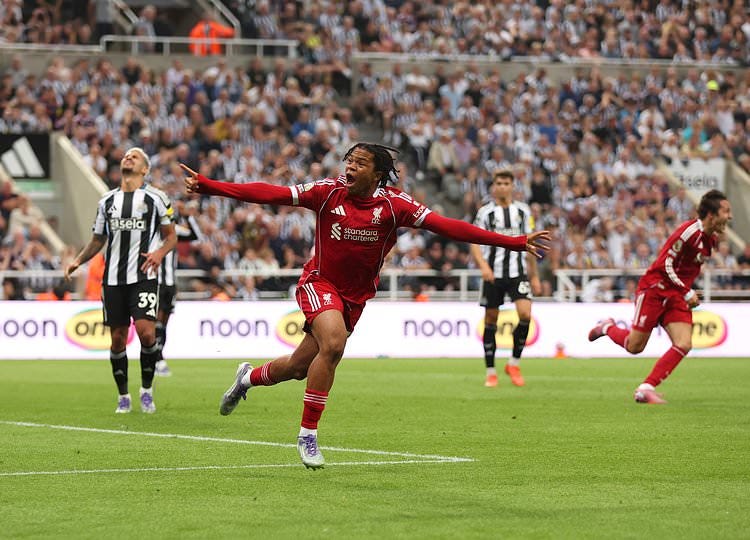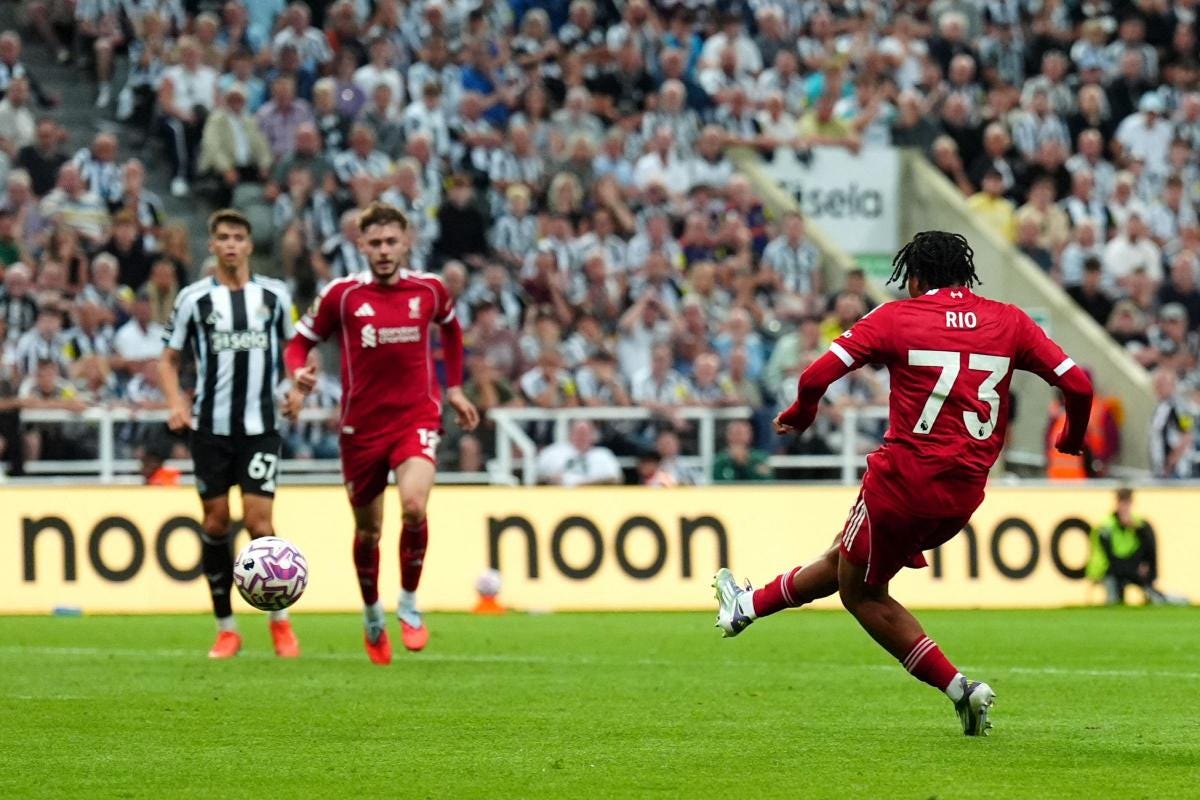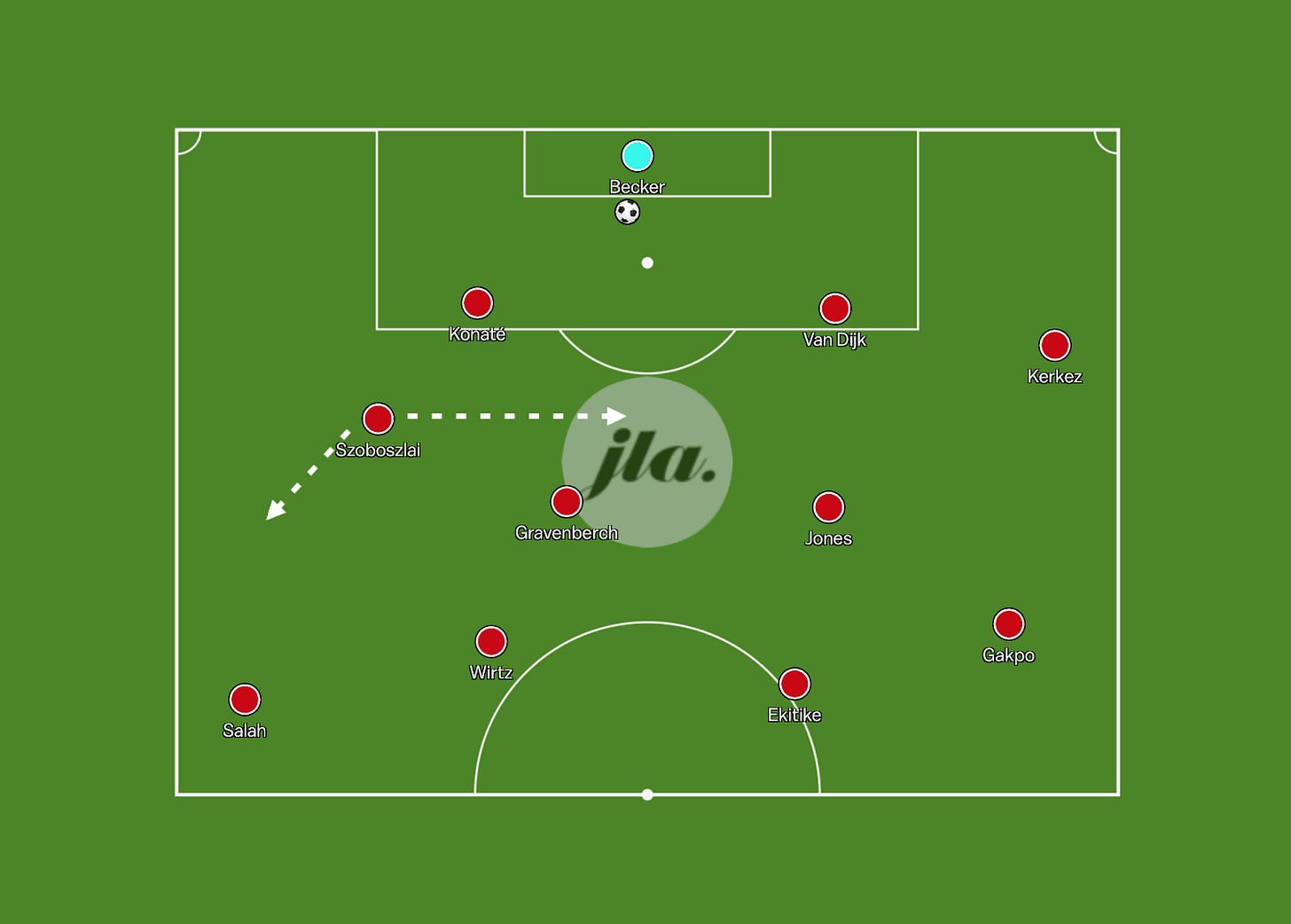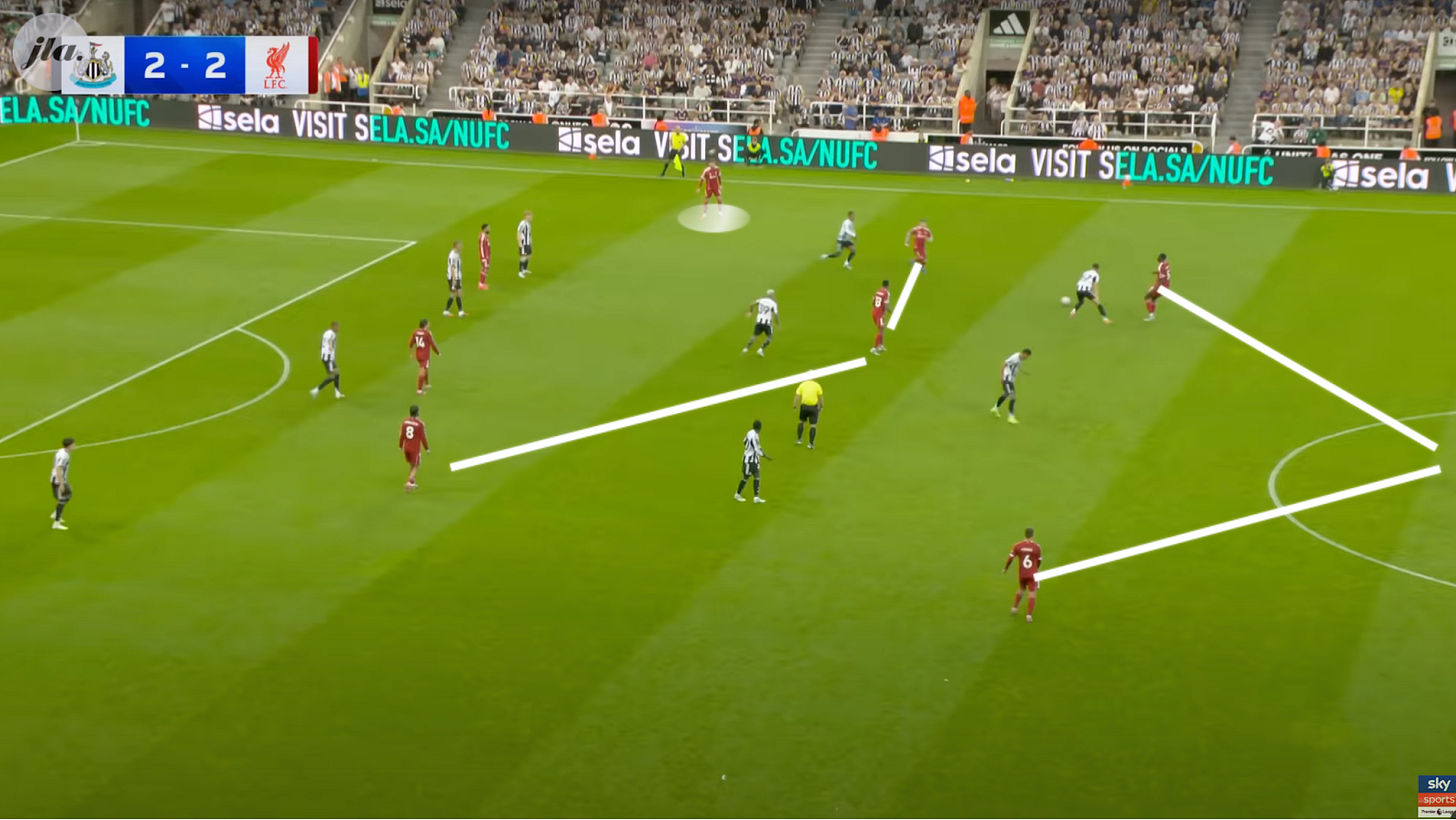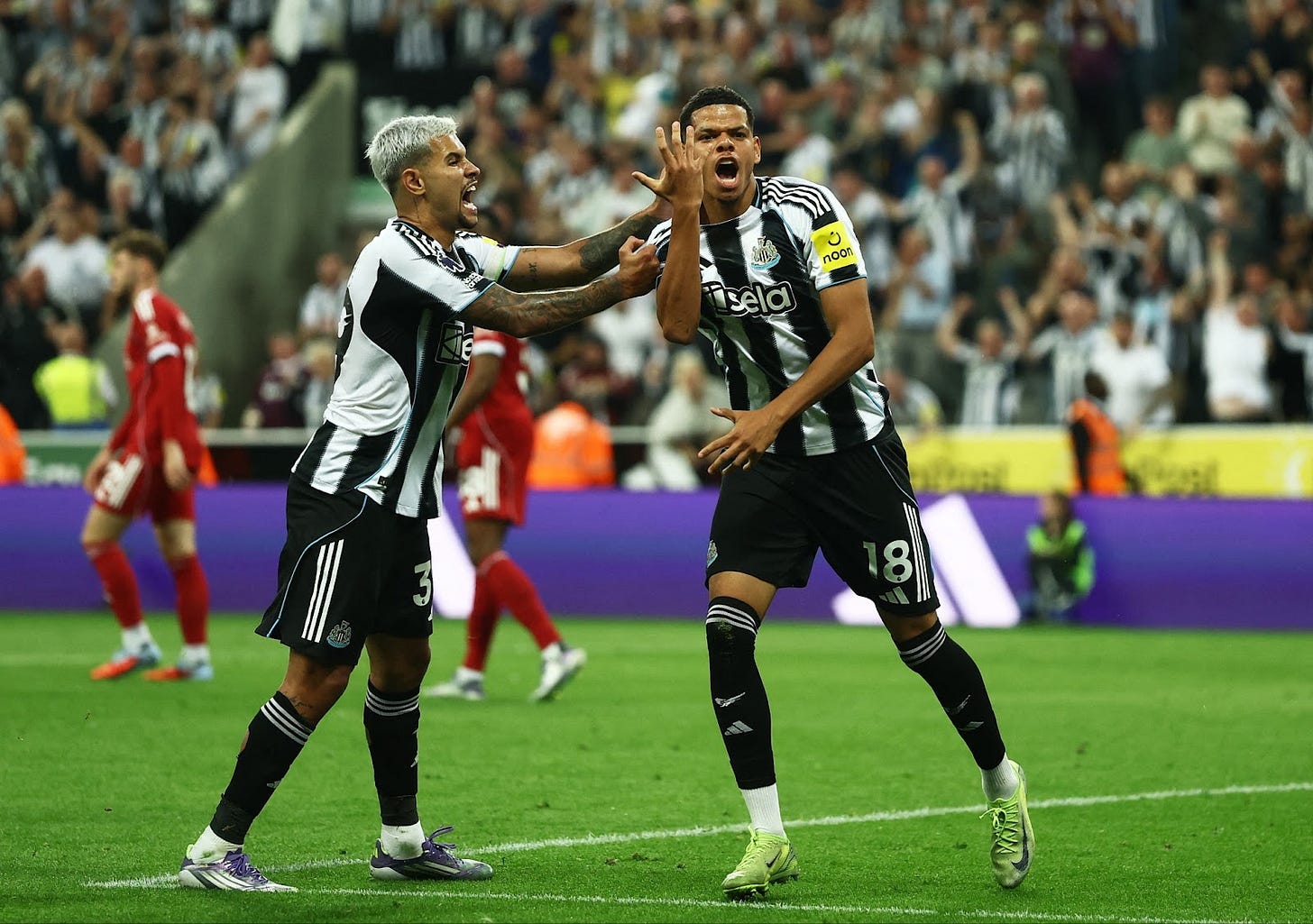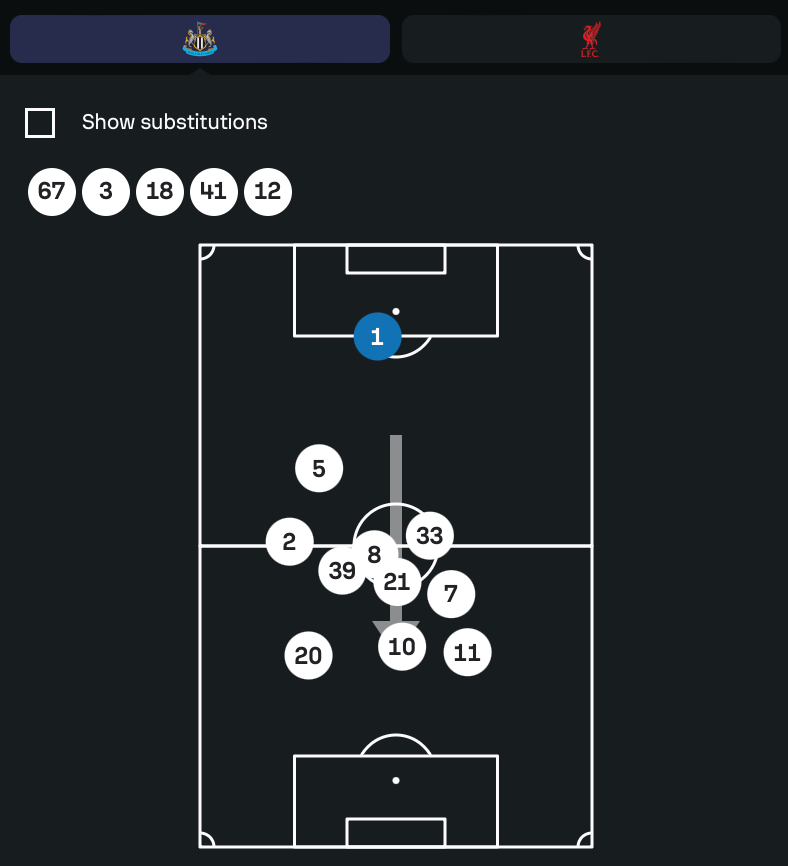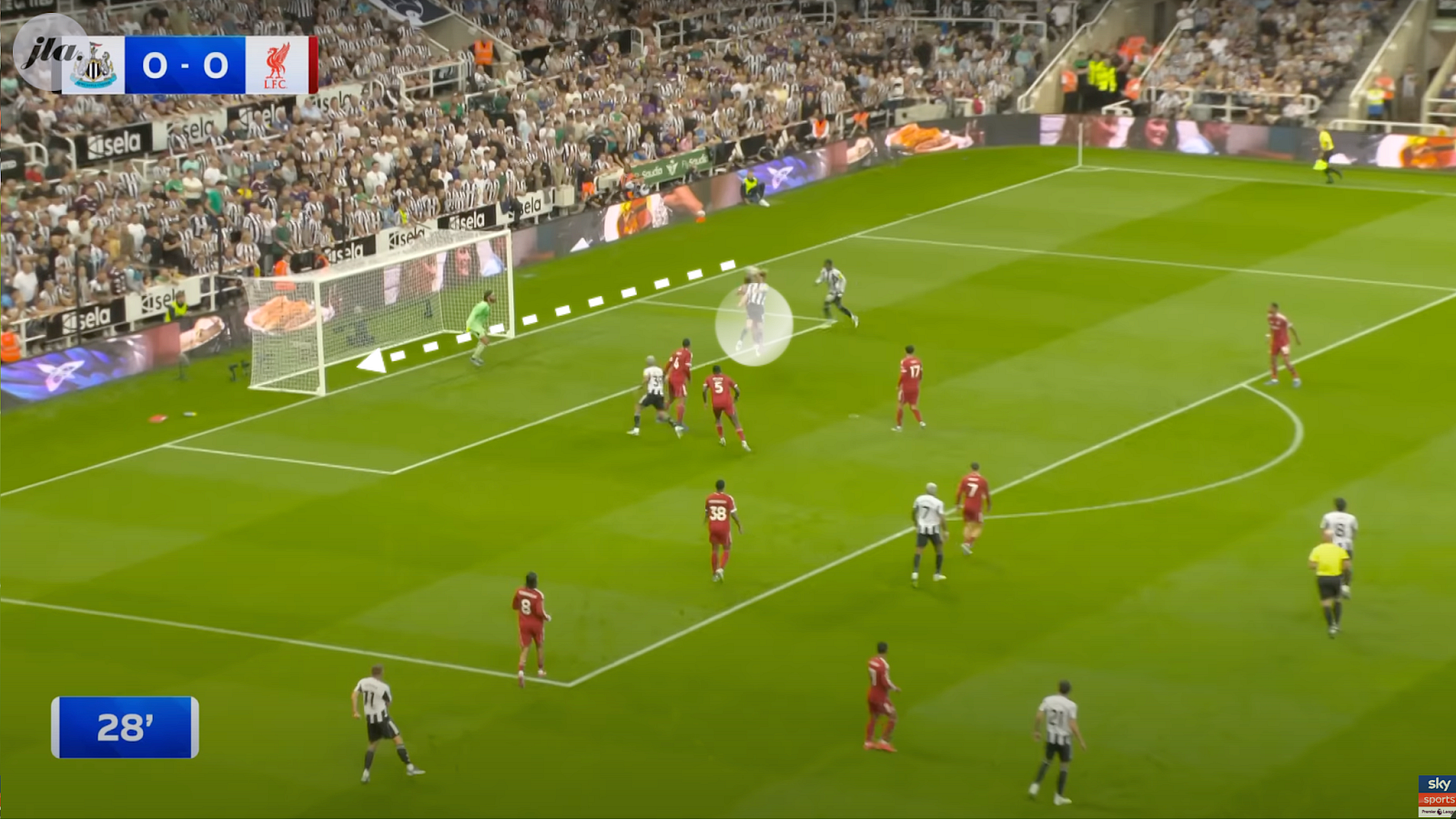What is black and white and red all over?
“Isak in a Newcastle kit?” answer vehement Newcastle United fans, before spluttering accusations about him being a turncoat for wanting to join The Reds.
The headlines preceding this game write themselves. It’s set to be a blockbuster. And the chances are, the headlines say, it won’t take much for emotions to spill over (if they haven’t already prior to the game).
This is the first game this season at St. James Park. The Toon Army will be looking to reinvigorate their start to the season after a disappointing and frustrating display in Birmingham last week. Adding to the spectacle, this game has been a tense and testy affair in recent history: last year's 3-3 draw was played with fervidity and aggression.
Further stoking the flames, The Magpies have struggled to collect shiny objects this summer, being spurned by Ekitike, Mbeumo, Sesko, Delap, Pedro, and, at the time of writing, Strand Larsen. Newcastle tried to sign Ekitke on three separate occasions. Until, on Newcastle’s final attempt, Liverpool swooped in to usurp them.
And the nail in the coffin: their star man, the jewel in the crown – Alexander Isak, has decided that he wants a move to Liverpool.
This sense of grievance will be projected onto Liverpool, no doubt. The fans will be baying for blood – and they’ll let The Reds know.
And that’s what the Geordies did. And were the headlines correct, was the game a blockbuster, pure cinema? Absolutely.
This game, despite the obvious lack in quality for large moments, was heated and impassioned. Unadulterated emotion. It might as well have been written for cinema, with endless seemingly scripted moments. Liverpool go 2-0 up against 10 men; Newcastle through grit, determination and will claw it back to 2-2; and, out of Newcastle’s maws, a 16 year-old Liverpool player scores the winner on his Premier League debut, a week after receiving his GCSEs.
It seems that the headlines succeeding the game, similarly, write themselves.
Let’s try to break down some of these moments.
Rio’s Remontada
We shouldn't let the cinematic, romantic moments gloss over the fact that Liverpool were pretty dreadful.
Liverpool, likely unsettled by the feverish atmosphere, looked shaken despite Newcastle playing with 10 men for most of the match. From the off, Arne Slot, attempting to combat the intensity of the Newcastle press and pacify the crowd, clearly instructed his players to disrupt the flow of the game. This was primarily undertaken by taking their time on dead balls and set pieces.
In reality, however, this did little.
For this to work, Liverpool needed to take control, dictate the ebb and flow of the game – but they couldn’t get a foothold. This was the same before and after Newcastle went down to 10 men.
The prime reason for this was midfield weaknesses – specifically, Liverpool’s inability to build-up and retain possession. Tactically, there isn’t much to say, beyond the fact that Liverpool’s midfield looks imbalanced.
This is, of course, impacted by the absence of Mac Alister, whose ability to quickly pass the ball through the lines would’ve been essential to beat the Newcastle press; further compounded by Szoboszlai playing as the makeshift rightback (and although, I think, he was Liverpool’s best player, this confused the build-up): he seemed unsure over whether to invert or stay wide, especially in this new system where Slot uses more traditional fullbacks who invert less, yet Szoboszlai wants to be in midfield.
It is no coincidence that for the winning goal Liverpool’s formation resembled the structure they used last season, with Konate, Van Dijk (off screen below) and Kerkez transitioning into a back-3 and Ramsey (highlighted) pushing up whilst holding the width and a midfield where Gravenberch is the deepest and Szoboszlai is furthest forward.
This allowed Liverpool to comfortably play through the Newcastle lines. Finding familiarity with the new iteration of this structure that effectively incorporates the new players, will be Slot’s immediate challenge.
In terms of individuals, to highlight two, Konate and Kerkez were especially poor: Konate repeatedly got caught out of position and was partly culpable for the second goal; Kerkez, too, shied away from the ball, leading to the first goal.
And the goals. In stark contrast to the other aspects of Liverpool’s game, all the goals were quality; but, the cherry on the top is the winning goal: Szoboszlai’s dummy was perfect, affording Rio Ngumoha the time and space to place the ball into the net, with composure and precision beyond his years.
Despite this movie-like ending, Liverpool fans should feel a little apprehensive about the rest of their season. Liverpool haven’t clicked. Arne has yet to find a midfield system that complements his players’ talents – and in these last two games, this has been plain. But, on the upside, it's better to learn this lesson by winning both games: is that not what champions do?
Tyneside Tempered
Newcastle were unlucky and, on balance, the better team. And, regardless of the Newcastle loss, their fans can be proud of their team's intent.
Newcastle started the game, as is typical of them, with an aggressive high-press. This involved the leftback, Livramento, pestering the makeshift Liverpool rightback, Szoboszlai – as well as Tonali marking Wirtz out of the game.
Newcastle’s Average Positions vs Liverpool
Livramento’s (21) average position was unusually high and central because his man to press was Szoboszlai. When Szoboszlai inverted, after receiving the ball from one of the centrebacks on the build-up, he could never turn because Livramento was constantly at his back. This press allowed Newcastle to make 8 interceptions to Liverpool’s none – and unsettled Liverpool, who weren’t able to confidently play through it.
Of course, the question lingering is whether the result would’ve been different with Isak. Because, despite the interceptions Newcastle made, they couldn’t capitalise: they had 7 shots off target, whereas Liverpool had 0.
And, the best chance, I think, Isak scores:
After the sending off – a clear red from a Gordon who got caught up in the emotions of the occasion – Howe had to adapt his tactics. Their formation shifted from a 4-5-1 to a 4-3-2 out-of-possession. They still riskily retained the high-press, despite the (on paper) ease with which teams can play through it when down to 10 men.
Howe’s adapted tactic was to keep the ball as close to the Liverpool box as possible, threatening the Liverpool goal by playing plenty of crosses, long balls, and long throw-ins. They did this effectively: 22% of Newcastle’s passes were long passes; Liverpool were forced to make 44 clearances to Newcastle's 20.
And, most crucially, the two goals arose from this tactic.
The second half was so rife with set-pieces that the ball was in play for a meagre 40.8% of the game time, the lowest percentage in a Premier League match since 2010.
Unfortunately, similarly to Gordon, Newcastle got caught up in the emotions of the occasion. Though they were clearly on top and Liverpool looked rattled, they became overzealous and started pushing for the winning goal, thereby leading Liverpool to cut through the 10-men. They overreached.
Newcastle can hold their heads up, nevertheless. They played fantastically with spirit and passion. The zeal and energy surrounding the team and Tyneside, along with the tactical aptitude of Howe, will result in them performing well this season – but, perhaps, only if they sign a striker or, God forbid, reintegrate the pariah…



